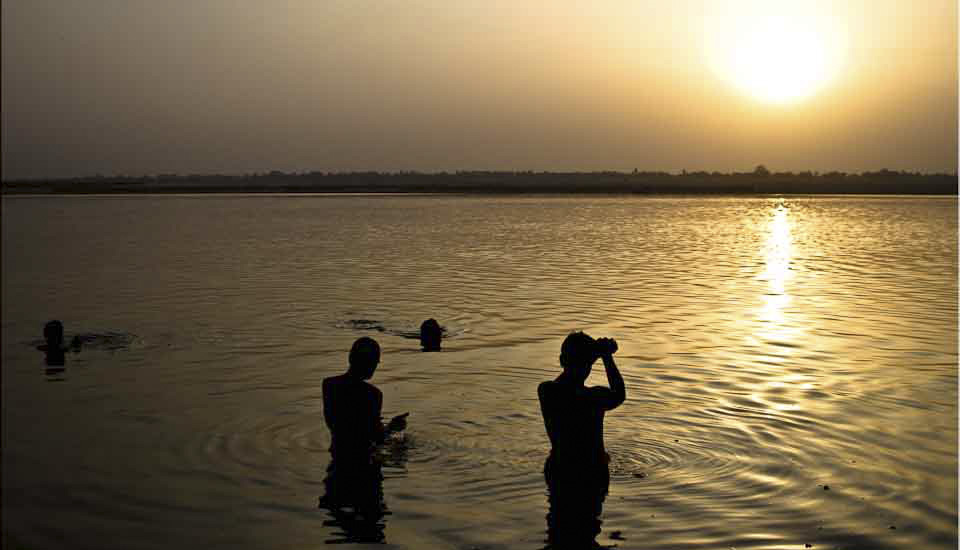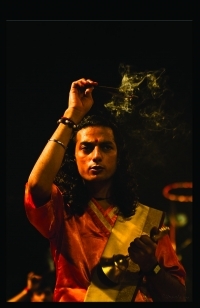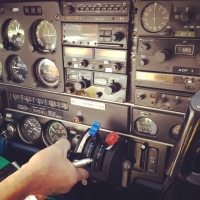.jpg)
Women in a Queue
The crush of people in the streets of Haridwar during a Kumbh Mela is almost unimaginable – but most of them are happy and smiling. Crowds are a such a normal state of affairs during the festival that I can’t remember what these people were lined up for!
It is heartbreaking watching the situation in India with the Kappa and Delta B.1.617 variants of COVID-19 sweeping through the population and devastating communities. First detected last October, the variants – and the societal factors enabling them – have caused a huge second wave of infections and resulted in around 4000 deaths per day at the peak in May (see: Worldometer).
The mass of people who attended the Haridwar Kumbh Mela celebrations between January and April this year has been blamed – at least in part – for this deadly wave. Denial of the event’s potential as a super-spreader has also been rife: back in March, India’s Prime Minister Modi invited devotees to the festival, assuring them it was “clean” and “safe”, and only after the festival’s biggest days – and the illness and hospitalisation of a number of saints and seers – suggested that attendance should, in future, only be “symbolic”.
As I have written before (see: Haridwar Mela) the Kumbh Mela – literally “festival of the pot” – is one of the most holy Hindu religious festivals and pilgrimages, rotating every three years or so across four sacred river locations. The faithful believe that when they bath in these rivers on the auspicious days, they will be absolved of sins and delivered out of the cycle of birth and death.
They travel all across the country for the privilege – and this year many took COVID-19 home with them, while still denying its existence or impact (see: Guardian: Superspreader).
Of course, many people took heed, and the number of participants was well down on previous melas, with 3.1 million people bathing on the most auspicious day of April 12th. The last time the Kumbh Mela was in Haridwar, back in 2010, an estimated 10 million bathed in the Ganges on the sacred day of April 14th. UNESCO has inscribed the mela as the largest peaceful congregation of pilgrims on earth.
The many pilgrims I met while I was wandering the streets and festival campgrounds of Haridwar in 2010 were open and welcoming. For many of them, it was a once in a lifetime experience, and they were overwhelmingly happy to be there.
.jpg)
Woman in a Blue Ghoonghat
Everywhere I go, I am met with beautiful smiles.
.jpg)
Reading the Paper

Sadhu Walking

People in a Queue
There are crowds everywhere: if I look out of the city …

The Crush in the Streets
… or towards the river-front, the streets are full.

Along the Ganges
Some of the ghats along branches of the river are quiet – the main bathing sites are elsewhere. That bamboo fencing on the other side of the ghats is for crowd management.

Food Stall
With millions of people on the move, you need food – and the street venders are doing a brisk trade.

Man in White

Woman in Brown

Smiling Man in Scarves
I am always touched and amazed by how generous Indian people are: cheerfully interacting with me and allowing me to make their portraits.

Elegant Woman in Yellow

Woman in Red

Men in the Camps
It’s hot on the dusty walkways that lead to temporary camp that houses the mass of humanity.

Sadhu in Saffron
The sadhus fascinate me: …

Sadhu in Yellow
… even those travelling together are so different.

Guru on a Platform
Inside the camp area, gurus, saints, and seers all have their own large tented areas – and their own disciples.

Doing Laundry
This might be a temporary space, but everything is quite orderly, and everyday lives continue.

Tent and Cloths

Hanging Laundry

Smiling Sadhu

Sadhu in Red and Gold

Group in a Tent
What amazed me about this group is how well the men sit cross-legged – I don’t think you’d find a group of Westerners who could sit so comfortably!

Applying Tilaka

Woman in Pink

In the Camps

Mountains in the Background
The mountains rise up into the hazy air behind the Ganges River – and the ghats below are crowded with people.

Waiting for the Train
All those pilgrims who come into the city for the mela have to leave again – …

The Long Wait
… so the railway station was packed with travellers and their belongings.

A Train is Coming!

The joy so many people took in attending this religious gathering was palpable. Given that it only happens every twelve years, I can understand people’s reluctance to forgo their planned pilgrimages.
But, this year’s participants and their communities have paid a high price.
Photos: 15April2010

































.png)

